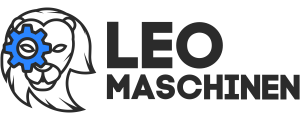As the world shifts towards sustainable energy sources, offshore wind turbines stand tall as a beacon of clean power generation. Harnessing the immense energy of winds blowing across vast oceans, these towering structures offer a compelling solution to meet our growing energy demands while reducing our carbon footprint.
Offshore wind farms boast several advantages over their land-based counterparts. Stronger and more consistent winds at sea translate to higher energy yields and greater efficiency. The vast expanse of the ocean provides ample space for large-scale wind farms, minimizing land-use conflicts. Moreover, offshore wind turbines have a lower visual and noise impact on communities.
With our deep-rooted expertise in the energy sector and a commitment to sustainable solutions, we’re poised to support your offshore wind projects. Whether you’re an energy company, investor, or developer, we offer comprehensive solutions and expert guidance to navigate the complexities of this dynamic industry.
Types of Offshore Wind Turbines
Offshore wind turbines come in two primary configurations, each designed to tackle specific challenges and opportunities presented by the marine environment:
- Bottom-Fixed Offshore Wind Turbines
These turbines are anchored directly to the seabed using various foundation structures like monopiles, tripods, or jackets. They are the most common type of offshore wind turbine, suitable for shallow to medium water depths (typically up to 50-60 meters). Bottom-fixed turbines benefit from established installation techniques and lower costs compared to floating options. However, their applicability is limited by water depth and seabed conditions.
- Floating Offshore Wind Turbines
These innovative turbines are mounted on floating platforms anchored to the seabed using mooring lines. This technology unlocks the vast potential of deep-water sites, where traditional bottom-fixed turbines are impractical. Floating turbines offer greater flexibility in site selection, access to stronger and more consistent winds, and reduced visual impact on coastal communities. However, they currently face higher costs and technical challenges compared to bottom-fixed options.
The choice between bottom-fixed and floating turbines depends on various factors, including water depth, seabed conditions, environmental considerations, and project economics. At Leomaschinen, we have the expertise to assess your specific requirements and recommend the most suitable turbine type for your offshore wind project.
Key Suppliers
- Siemens Gamesa Renewable Energy. A global leader in offshore wind, Siemens Gamesa is renowned for its cutting-edge technology, extensive experience, and large-scale project capabilities. They offer a range of powerful and efficient offshore wind turbines, pushing the boundaries of energy generation.
- Vestas. Another major player in the wind energy sector, Vestas has a strong presence in the offshore market. Their turbines are known for their reliability and performance, making them a popular choice for offshore wind farm developers.
- GE Renewable Energy. With a diverse portfolio of renewable energy solutions, GE Renewable Energy is a significant contributor to the offshore wind industry. Their Haliade-X turbine, one of the world’s most powerful offshore wind turbines, showcases their commitment to technological innovation.
Several other companies play vital roles in the offshore wind market, including MHI Vestas Offshore Wind, Goldwind, and Envision Energy. These manufacturers offer a range of turbine models and solutions to cater to diverse project requirements.
At Leomaschinen, we maintain strong relationships with leading offshore wind turbine manufacturers, ensuring access to the latest technology and equipment. We can leverage our network to help you select the optimal turbine solution for your specific project needs, considering factors like power output, site conditions, and budget.
Cost of Offshore Wind Turbines
Compared to onshore wind turbines, offshore projects typically incur higher costs due to the challenging marine environment and specialized infrastructure required. However, ongoing technological advancements and economies of scale are driving down costs, making offshore wind increasingly competitive with other energy sources.
At Leomaschinen, we understand the financial complexities of offshore wind projects. We’ll work closely with you to explore cost-effective solutions, leveraging our industry knowledge and network to optimize your investment and ensure a successful project outcome.
Wind Turbines for Vessels
While the primary focus of offshore wind turbines is large-scale power generation, smaller wind turbines, often referred to as “seawind” or “wind turbines for boats,” are also gaining popularity for onboard applications. These compact turbines can be installed on yachts, sailboats, and other vessels to supplement onboard power generation and reduce reliance on fossil fuels.
- Benefits: Onboard wind turbines offer several advantages, including reduced fuel consumption, lower emissions, extended cruising range, and greater energy independence. They can provide a clean and renewable source of electricity for various onboard systems, such as lighting, navigation, and communication.
- Challenges: The effectiveness of onboard wind turbines depends on wind availability and vessel movement. They may not generate sufficient power in calm conditions or when the vessel is stationary. Additionally, their size and placement on the vessel need to be carefully considered to avoid interference with navigation and other onboard operations.
We can advise you on the feasibility and suitability of integrating wind turbines into your onboard power system, considering factors like vessel type, power requirements, and operational profile.
Contact us to learn more about how we can contribute to your offshore wind success story.

